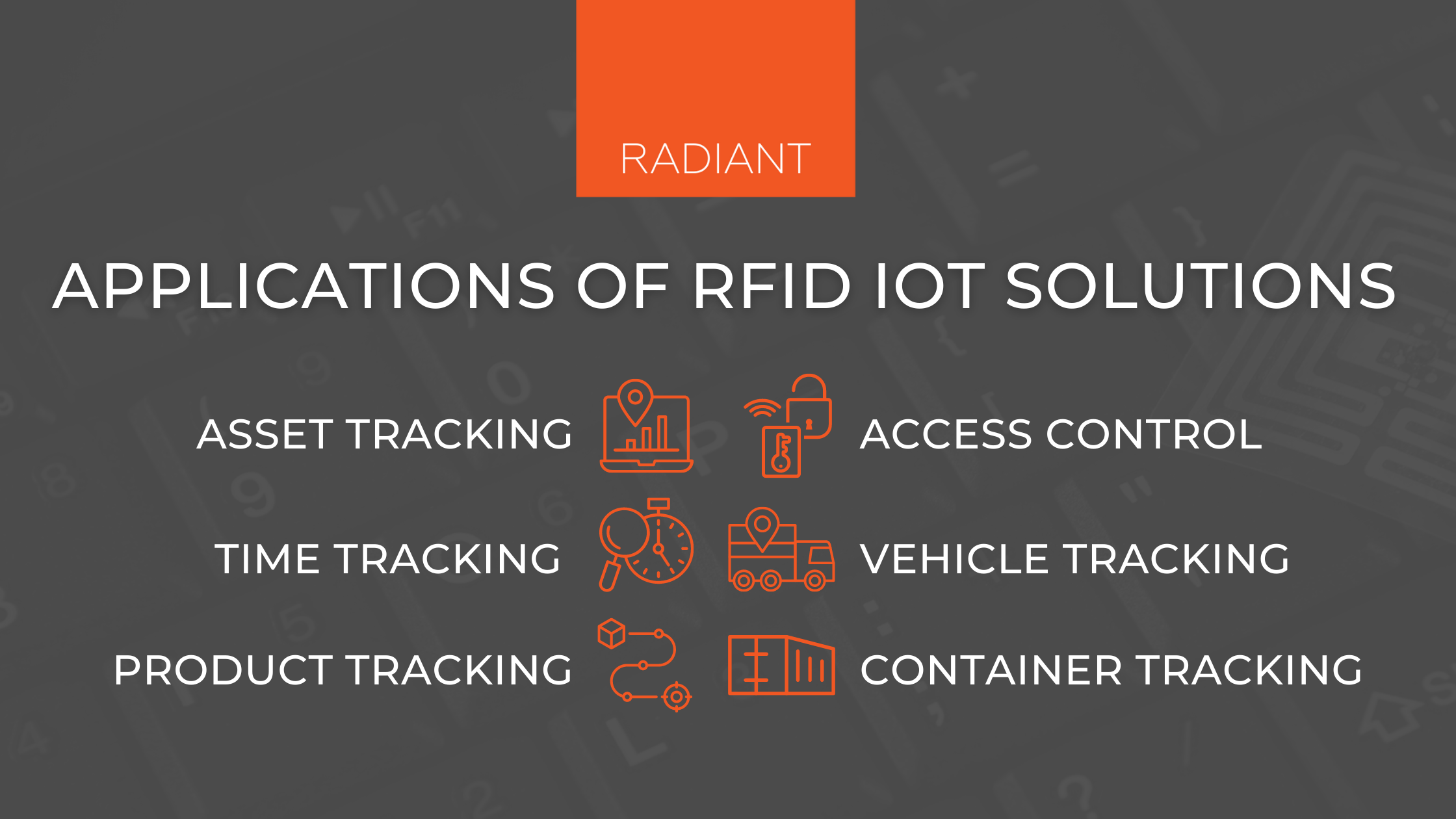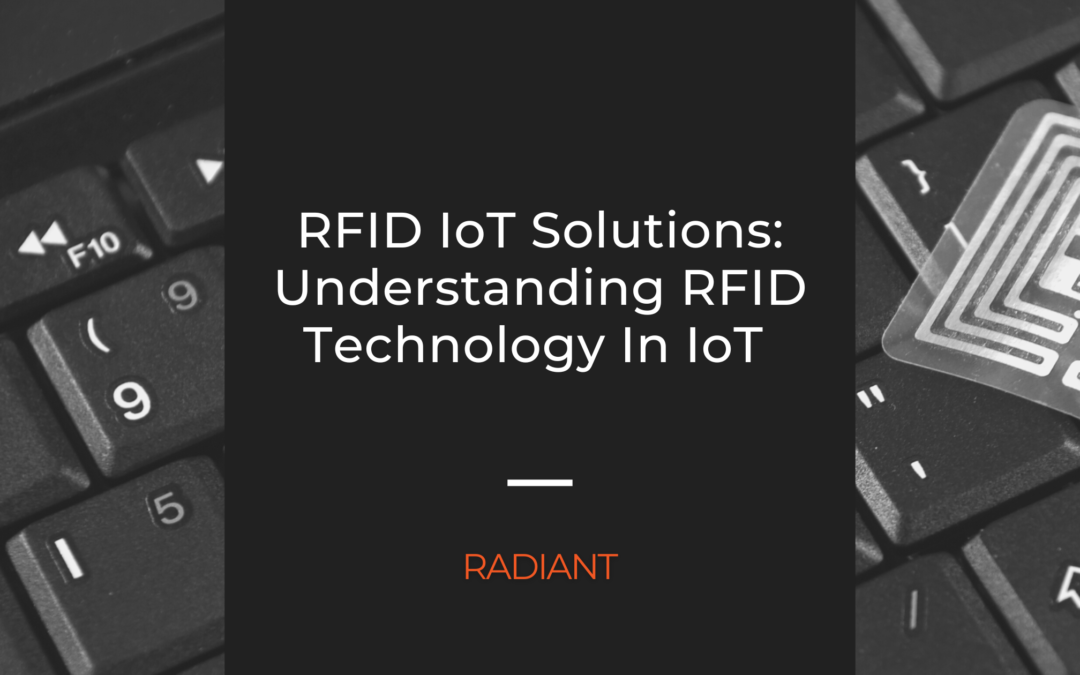Are you curious how radio-frequency identification (RFID) and the Internet of Things (IoT) can help drive your business forward?
Exploring RFID IoT solutions can give your organization an edge in today’s expanding digital landscape, improving operational efficiency and providing deeper levels of visibility into business processes.
From tracking assets with precision to collecting data for machine learning algorithms, RFID technology can be used within a robust IoT framework in countless ways.
Read on to discover how this innovative solution revolutionizes day-to-day operations and makes real-time decisions easier than ever.
What are RFID IoT Solutions?
RFID IoT solutions are cutting-edge technology solutions that combine two critical components: RFID and IoT.
IoT refers to the “Internet of Things,” which is the network of devices that connect and communicate with each other using a variety of communication protocols. RFID (Radio Frequency Identification) is a technology that allows objects to be identified and tracked through high-frequency radio waves.
RFID IoT solutions leverage the power of these two technologies to create solutions that can monitor and manage objects in real time, enabling organizations to improve operational efficiency, automate processes, and increase visibility into their operations.
With RFID IoT solutions, organizations can track assets, monitor inventory levels, and manage supply chains more effectively, ultimately leading to improved business results.
How do RFID IoT Solutions work?
RFID IoT solutions combine two powerful technologies to bring unparalleled benefits to businesses operating in supply chain management, inventory tracking, and asset monitoring.
RFID (radio frequency identification), is a wireless communication technology that uses electromagnetic fields to identify and track tags attached to objects via RFID readers. IoT (Internet of Things) brings together a myriad of smart devices and software, enabling communication, monitoring, and real-time control. The combination of these technologies allows for improved supply chain visibility, asset tracking, and product tracing.
These IoT solutions are highly efficient and have become increasingly popular among businesses looking to improve their operations. Through the use of RFID IoT solutions, businesses can reduce errors, save time and cut costs, ultimately leading to increased productivity and revenue.
The Benefits of RFID IoT Solutions
RFID IoT solutions offer a wealth of benefits that make them indispensable tools for businesses across industries.
Perhaps one of the greatest benefits is the ability to track and monitor inventory in real-time. This enables companies to optimize their supply chains and reduce waste, ultimately leading to cost savings and improved bottom lines.
Another benefit is the increased visibility and transparency that RFID IoT solutions provide. This allows businesses to be more responsive to customer demands and better equipped to make strategic decisions based on accurate and up-to-date information.
Additionally, RFID IoT solutions can enhance security and safety measures for businesses, making it easier to identify and mitigate potential risks.
Overall, RFID IoT solutions are a powerful tool that can help businesses increase efficiency, reduce costs, and improve their operations in numerous ways.
To receive a monthly newsletter highlighting our newest and most popular blogs, sign-up below.
Common Applications of RFID IoT Solutions

Asset Tracking: Active tags can be attached to physical assets such as tools, equipment, and inventory, allowing businesses to track the location and status of these items in real-time. This information can be used as part of an IoT solution to optimize asset utilization, prevent theft and loss, and streamline inventory management.
Access Control: RFID tags can be used to control access to facilities, buildings, and rooms. For example, an RFID tag could be used to grant employees access to their office or a restricted area within a factory. This application of an RFID system can improve security and help businesses to keep track of who is accessing which areas.
Time Tracking: Passive RFID tags can be used to track the arrival and departure times of employees, visitors, and deliveries. This information can be used to manage staffing levels, optimize workflows, and monitor compliance with safety regulations.
Vehicle Tracking: RFID tags can be placed on vehicles such as cars, trucks, buses, and trains in order to track their location and movements. This information can be used for fleet management, traffic control, and security purposes.
Product Tracking: RFID tags can be placed on products or packaging in order to track their movement through the supply chain from production to point of sale. This information can be used to improve product quality control, prevent counterfeiting, and reduce inventory levels.
Container Tracking: RFID tags can be placed on shipping containers in order to track their location and movements. This information can be used for supply chain management, security purposes, and customs compliance.
Key Considerations when Determining if an RFID IoT Solution is Right for Your Business
When it comes to determining if an RFID IoT solution is the right fit for your business, there are a few key considerations to keep in mind.
First and foremost, it’s important to evaluate whether the RFID solution aligns with your business needs and goals. Are you looking to improve inventory management, enhance customer experiences, or optimize your supply chain?
Once you’ve established your objectives, you’ll also need to assess the feasibility of an RFID IoT solution in terms of deployment, maintenance, power source, and resource allocation.
Additionally, you’ll want to consider data security and privacy, as well as any applicable regulations and industry standards.
Ultimately, the decision to implement an RFID IoT solution requires thoughtful planning and careful consideration to ensure that it will provide genuine value to your business.
Explore RFID IoT Solutions with Radiant
In today’s business world, any organization looking to get the most out of its assets needs to consider the role RFID technologies can play in helping equip its IoT solutions.
Companies are increasingly harnessing the data stored on individual IoT devices as part of an overall asset management strategy, and RFID not only offers organizations a way for tracking device movement but also provides visibility into how valuable assets are being used across a company.
By understanding how RFID IoT solutions work, measuring the potential benefits for a given application, and considering key factors for successful deployments, businesses can determine whether an RFID-based solution is right for them.
Radiant’s experience with deploying RFID solutions for businesses’ unique requirements has made us an industry leader in connecting organizations with the technology they need to stay ahead. So if you’re looking to discover the full potential of your assets, explore our IoT asset tracking solution and request your demo below – we look forward to helping you take your business intelligence initiatives to new heights.
Are you ready to learn more? Request a demo.
Last Updated on June 27, 2023 by Radiant

